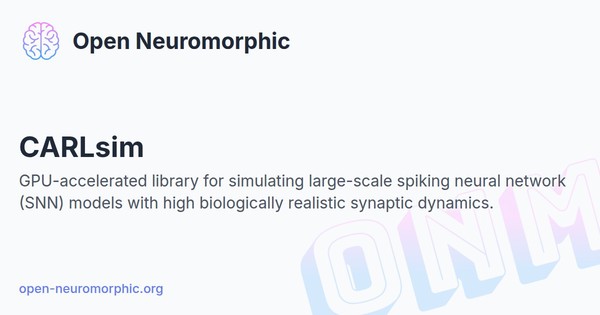Overview
CARLsim is an efficient, easy-to-use, GPU-accelerated library for simulating large-scale spiking neural network (SNN) models with a high degree of biological detail. CARLsim allows execution of networks of Izhikevich spiking neurons with realistic synaptic dynamics on both generic x86 CPUs and standard off-the-shelf GPUs. The simulator provides a PyNN-like programming interface in C/C++, which allows for details and parameters to be specified at the synapse, neuron, and network level.
Some features include:
- CUDA 11 support
- CMake build system
- Neuromodulatory features
- Integration of Python LEAP
- Axonal Plasticity learning rule (release 6.1)
- a more complete STDP implementation which includes neuromodulatory mechanisms
- an automated parameter tuning interface that utilizes evolutionary algorithms to construct functional SNNs
- a test suite for functional code verification

